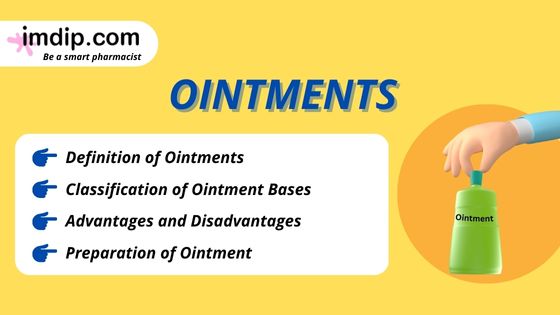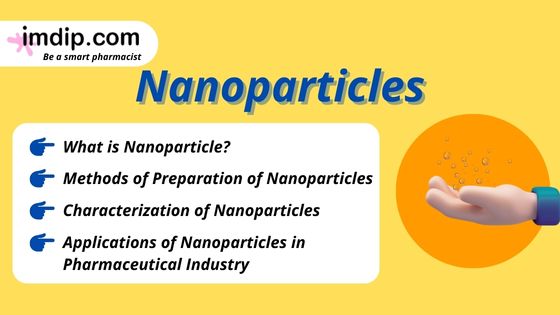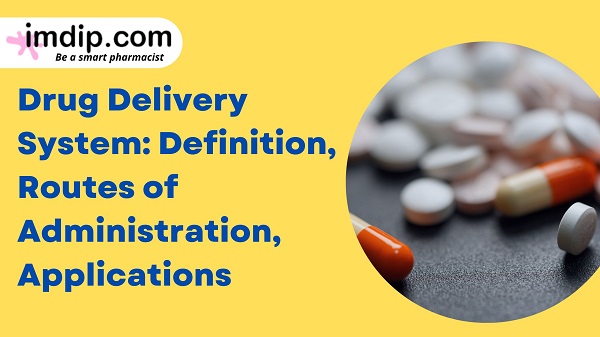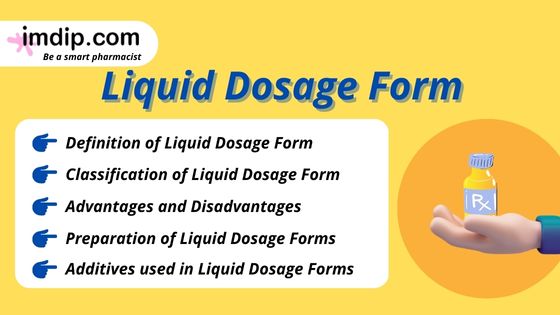
Example of ointment: Mupirocin Ointment IP 2% w/w, Betamethasone valerate and Salicylic acid skin Ointment, etc.
Types of Ointment bases
There are 5 types of ointment bases.
- Hydrocarbon or Oleaginous Bases
- Absorption Bases
- Emulsion Bases (Water-in-Oil Emulsions & Oil-in-Water Emulsions)
- Water-Soluble Bases
- Combination bases
Classification of Ointment Bases:
- Hydrocarbon or Oleaginous Bases: Hydrocarbon bases are the most commonly used type of ointment bases. They are composed of hydrocarbons such as petrolatum and mineral oil, which provide a greasy consistency and occlusive properties. They are ideal for use in dry skin conditions and for protecting the skin from moisture loss.
- Absorption Bases: Absorption bases are ointment bases that are designed to be absorbed into the skin. They are made up of mixtures of hydrophilic and lipophilic substances, such as lanolin, beeswax, and petrolatum. Absorption bases are ideal for use in wet skin conditions, such as weeping eczema, as they absorb the excess moisture from the skin.
- Emulsion Bases:
Oil-in-Water Emulsions: Oil-in-water emulsions are ointment bases that contain a mixture of oil and water. They are ideal for use on dry skin conditions and provide a moisturizing effect. They are easily absorbed into the skin and do not leave a greasy residue.
- Water-Soluble Bases: Water-soluble bases are ointment bases that are composed of water-soluble polymers such as polyethylene glycol. They are ideal for use in ointments that require easy washability and for delivering water-soluble drugs.
- Combination Bases: Combination bases are ointment bases that combine two or more types of bases to provide a synergistic effect. For example, a combination of hydrocarbon and absorption bases can be used to provide both occlusive and absorbent properties.
Advantages of Ointments
- Enhanced Drug Delivery: Ointments are often used to deliver drugs to the skin because they can penetrate the skin more effectively than other topical formulations, such as creams or lotions. This allows the drug to be absorbed more quickly and effectively, resulting in faster and more complete healing.
- Long-lasting Effects: Ointments have a longer duration of action than other topical formulations. This is because they remain on the skin for a longer period of time, allowing the drug to be absorbed more slowly and providing sustained release of the active ingredient.
- Protection: Ointments form a protective barrier on the skin that can help to prevent further damage or infection. This is particularly useful in treating conditions such as burns or open wounds, where the skin is vulnerable to infection.
- Minimal Irritation: Ointments are generally less irritating to the skin than other topical formulations, such as creams or lotions. This is because they contain fewer preservatives and additives that can cause skin irritation.
Disadvantages of Ointments
- Greasy Texture: Ointments have a greasy texture that can make them uncomfortable to use. This is particularly true for people with oily or acne-prone skin, who may find that the ointment clogs their pores and exacerbates their condition.
- Staining: Ointments can stain clothing and bedding, which can be inconvenient and unsightly. This is particularly true for ointments that contain strong dyes or pigments.
- Limited Use: Ointments are not suitable for all skin conditions. For example, they may not be effective in treating conditions that require the active ingredient to be absorbed quickly into the skin, such as acne.
- Allergic Reactions: Some people may be allergic to the ingredients in ointments, which can cause skin irritation, itching, or a rash. This is particularly true for people with sensitive skin or those who have a history of allergic reactions.
Preparation Method of Ointment
- Step 1: Collection of the Ingredients and Equipment: Before starting the preparation of an ointment, gather all the necessary ingredients and equipment. The ingredients typically include the drug or drugs, the base or vehicle, and any additional ingredients such as preservatives or emulsifiers. The equipment required includes a mixing vessel, a heating source, a thermometer, and a spatula.
- Step 2: Weigh the Ingredients: Accurately weigh the required amount of each ingredient. This is important to ensure that the final product has the correct strength and consistency.
- Step 3: Melt the Base: Melt the base in a mixing vessel using a heating source such as a water bath or hot plate. Use a thermometer to monitor the temperature and ensure that the base does not overheat or burn.
- Step 4: Adition of Drug: Once the base has melted, add the drug or drugs to the mixing vessel. Mix thoroughly to ensure that the drug is evenly distributed throughout the base.
- Step 5: Additional Ingredients: If required, add any additional ingredients such as preservatives or emulsifiers to the mixing vessel. These ingredients help to stabilize the ointment and prolong its shelf life.
- Step 6: Homogenize the Mixture: Homogenize the mixture using a spatula or a mixer. This helps to ensure that the drug and any additional ingredients are evenly distributed throughout the base.
- Step 7: Cool and Store: Allow the mixture to cool to room temperature before transferring it to a suitable container for storage. Store the ointment in a cool, dry place away from direct sunlight.
Related Article















.png)
















